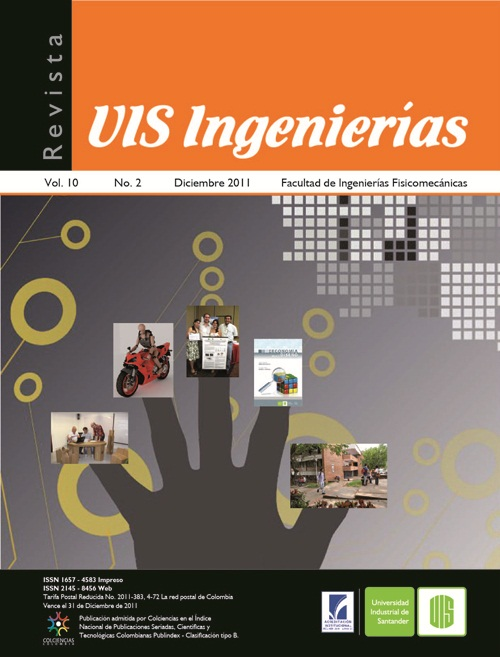Degradation of polylactic acid / hydroxyapatite and polyglycolic acid in simulated body fluid
Published 2011-12-15
Keywords
- biomaterial,
- impedance,
- microbalance,
- hydrolytic degradation
How to Cite
Abstract
In this work the degradation of composites of polylactic acid, polyglycolic acid and hydroxyapatite in a simulated physiological electrolyte solution was evaluated by electrochemical quartz crystal microbalance. The materials were obtained at different concentrations and cathodically electrodeposited on piezoelectric quartz crystals to form thin films. Coated crystals were immersed for 1, 3, 5, 7 and 10 days in simulated body fluid at temperature and pH constant at each interval analysis was performed Electrochemical Impedance Spectroscopy and Quartz Crystal Microbalance that allowed to relate the frequency change of the microbalance with the total electric charge transferred in the process of degradation.
Downloads
References
- Conde A., De Damborenea J.J, “Electrochemical impedance spectroscopy for studying the degradation of enamel coatings”, Corr. Sci., vol. 44, September. 2001, pp. 155-1567.
- Alvarez, N., Mantilla, J. Evolución de la cristalinidad de copolimeros de PLGA (70:30 y 50:50) mezclados con hidroxiapatita al 5% y al 10%, sometidos a degradación hidrolítica en fluido fisiológico simulado a 37°C, Tesis pregrado, UIS, Bucaramanga, 2009.
- Rodriguez, Daniel. Obtención de capas de nitruro de titanio mediante tratamiento termoquímico en titanio y Ti6A14V y caracterización de sus propiedades para aplicaciones biomédicas, Tesis Doctoral, Universitat Politècnica de Catalunya, Barcelona, 2001.
- Ginebra, Maria Pau. Desarrollo y caracterización de un cemento óseo basado en fosfatos tricálcico-α para aplicaciones quirúrgicas, Tesis Doctoral– Especialidad Física, Universitat Politècnica de Catalunya, Barcelona, 1996.
- González, R. J. et al., “Caracterización mediante FTIR y DSC de la interacción Colágeno– Hidroxiapatita”, IFMBE Proceedings 2008, vol. 18, part 20, pp 1246-1249.
- Sabot, Andrea; Krause, Steffi, “Simultaneous quartz crystal microbalance impedance and electrochemical impedance measurements. Investigation into the degradation of thin polymer films”, Anal. Chem., vol. 74, No. 14, July 2002, pp. 3304-3311.
- Rámila A.; Del Real R.P; Marcos R.; Horcajada P;, y Vallet-Regí M., “Drug release and in vitro assays of bioactive polymers/glass mixtures”, J. Sol-Gel Sci. Tech., vol. 26, No. 1-3, 2003, pp 1195-1198.
- Santos, Flavio; Méndez, Renata; Tatsuo, Lauro, “Applications of QCM, EIS and SPR in the investigation of surfaces and interfaces for the development of biosensors”, Quim. Nova, vol. 27, No. 6, December 2004, pp. 970-979.
- Sinha Ray Suprakas y Bousmina Mosto. Biodegradable polymers and they layered silicate nanocomposites: In greening the 21st century materials world. Progress in Materials Science, 50 2005, p.p. 962-1079.
- Bonzani, Ian C.; Geroge, Julian H., and STEVENS, Molly M. Novel materials for bone and cartilage regeneration. Current Opinion in Chemical Biology, 10, 2006, pp. 568-575.
- Zuwei, Ma; Zhengwei Mao y Changyou Gao. Surface modification and property analysis of biomedical polymers used for tissue engineering. Colloids and Surfaces B: Biointerfaces 60, 2007, pp. 137-157.
- Schuler, Martin, Trentin, Diana, Textor, Marcus and Tosatti, Samuele. Biomedical Interfaces: titanium surface technology for implants and cell carriers. Future Medicine, Nanomedicine, 1, 4, 2006, pp. 449-463.
- Lee, Jae Y., Bashur, Chris A., Goldstein, Aaron S. and Schimdt, Christine E. Polypyrrole-coated electrospun PLGA nanofibers for neural tissue applications. Biomaterials 30, 2009, pp. 4325- 4335.

